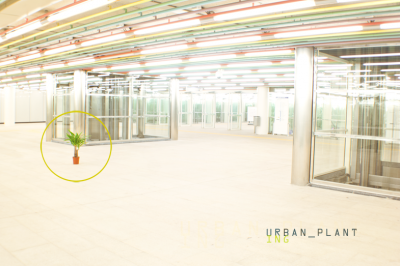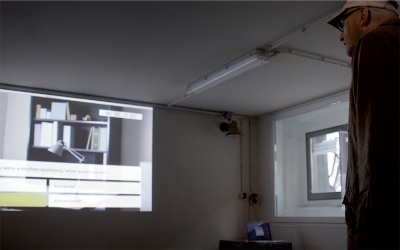User:Michaela/DRAFT latest
Tentative Title
x
Introduction
“I move through the city, disrupted by 'noise' and 'distortion' leaving a data trail. “
Etymologically the word ërase” depicts from c.1600, from Latin erasus, past participle of eradere "scrape out, scrape off, shave," from ex- "out" (see ex-) + radere "to scrape" (see raze).
- remove all traces of; destroy or obliterate:
- remove recorded material from (a magnetic tape or medium); delete (data) from a computer’s memory.
During my research I will approach the theme of data traces not looking only at its technological aspect but also using them as the subject of my current work. The inevitable generation of traces and its problematic resistance to deletion will be used as the main motive of a constructed poetic narrative that will take place in the public space.
Methodology:
Due to my background in visual arts and stage design, the notion of space and the text, are relevant elements in my practice that will reflect in this project.
In my research I am working on a series of projects related to the topic of traces which will end up leading to the final graduation project.
At the beginning of the academic year I tried to look at traces in a poetic order. In “Urban poetry” I extracted and formulated a visual poem ( a web page and printed stickers), inspired by Faceless project voice over. I recombined text and visuals, which evoke the notions of 'traces of data', 'New Machine', 'Current time' and 'Perfect present'. The language of the whole text assembles a play, with a loose narrative. I placed the stickers around the city, inviting the viewers to visit the website in order to reveal the full poem.
In addition to “Urban poetry” I will retrieve old hard drives, data storage and try to recover the data out of them, in order to examine abandoned data and leftover traces. By doing this I will explore the problematic aspect of the data erasure.
How I can feed it back into the system of trace? I will try to remix, recombine and sample these found traces in a poetic way by reconstructing or deconstructing what it remains to be lost...
In this sense I am not looking for treasure but instead looking for rubbish which can serve as a raw material for further investigation.
- key words/ domain of interests: erase traces, public space, online - offline media, participatory, action-reaction
Description
Technological perspective
How do we leave a trace of an online presence?
The amount of traces/ digital traces in form of caches, cookies, footprint of the browser is
stored, tracked and dumped in the system.
Various tools – PGP (encrypting your email), browser plug- ins, private networks (VPN) – are used to prevent our location to be tracked, our data to be exposed. All of which limits the traces we leave but it doesn't completely erase them. Driven by my personal motivation to explore the limitations of technology and different methods of resistance I became sceptic about the possibility of being able to not leave traces or in other words the (im)possibility to erase the digital footprint.
The common methods to erase files from systems don't actually delete them permanently. Those files remain hidden, abandoned in hard drives. The traces left remain present within time in the medium, allowing to be retrieved and becoming a subject of study. This fact raises questions about our level of awareness concerning the privacy in the digital realm. The ethical issue I want to address is: who has the right to withdrawal someone' s data and how this data could be used, reused and misused? In my work I would like to arise questions concerning problematic aspect of these traces.
City / Participation / Audience
I am interested in exploring possible ways of translating digital online/offline traces to the cityscape in a poetic way.
Escaping the gallery setting -“the white cube”, making use instead of the public space, not only allows to reach a broader and more diverse audience, but it will also provoke a different reaction.
Practices like the “derive” (as a form of urban voyage) performed by the Situationists tried to break the ordinary way of acting in the city, enforcing the citizens' participation. Sharing this intention and inspired by different forms of urban intervention, I would like to imply the audience's participation. This participation, will break down the boundaries between mediator and spectators and it will eventually create a dialogue with the work, raising questions about the purpose of the intervention.
Relation to previous practice
Description of previous projects:
- "Urban planting" is a situation specific small intervention in public space.
I took a plant, a common interior feature, and placed it out of its context at the Rotterdam Centraal metro station. I intentionally positioned it in the middle of the sidewalk where it frequently became an object of illumination by numerous fluorescent lights and CCTV cameras. I found myself and my nondescript form of intervention in the spotlight: overexposed, monitored and investigated.
The work consists of a series of photos with the exact time slots document the immediate authority's appearance and response to the intervention.
- 'CQ7_Creative Ability test' (in collaboration with Nicole)
This project was developed within the framework of ´Creative Industries ´ thematic seminar.
CQ7 Creative Ability test is an interactive installation providing a service which allows the users to test their creativity through a series of questions. The questions and answers depict from various sources. The user physically placing himself/ herself or selecting the chosen answer which eventually gives him/her a final creativity rating.
Ultimately the participants are coloured and numerically ranked in individual code not based on their answers but instead randomly generated. However most users see it as a serious assessment and even as an exam of their creativity.
The common characteristic between these projects is the audience and the staging of a situation.
This is an important detail could be applied to the work I would like to be engaged this year.
Audience:
Both projects took place in public space and they tried to involve active participation/ response from the audience. This allows the audience to reflect and affect the final outcome, by provides immediate feedback and it opens possibilities for a dialogue in the physical space.
Staging a situation
The described works above I tried to provoke reaction and arise some attention.
Even though I have to find a way to make the work more visible.
Relation to a larger context
I will investigate further on the city as a playground for performative action.
Various artistic practices from Situationist International, Apsolutno, Street art, Urban interventions, Culture in Action, Unpleasant design and activist movements are trying to reclaim back the city by introducing different modes and contexts . Situationist International and Apsolutno collective create sites and situations, which reflect upon and response to the emerging cultural, historical and political changes, shaping urban cities.
“'Taking absolutely real facts as a starting point for our interventions, we turned the familiar usual, or even marginal, which is often no longer perceived, into something unusual, out of ordinary, and worth further exploration. “
Practical steps
Throughout small prototypes and practical assignments I will:
- elaborate more on traces/ _erasing traces
- go through the listed literature, getting to know the body of work dealing with interventions, representang the idea of ' traces', online and offline practices, which reflect upon time, media, space and code
- find a blank space for interventions in the public domain.
References
- Debord. Guy The "Situationists International"
- Apsolutno and Revolver. The Absolute report. Springerin.
(time/ space/ code/memory)
- Marcus. Greil/ "Lipstick traces"
- Walter Benjamin Experience and poverty
- Luksch, Manu, Pate. Makul. "Faceless project" Voiceover
- The Art of Participation: 1950 to Now (Boris Groys)


